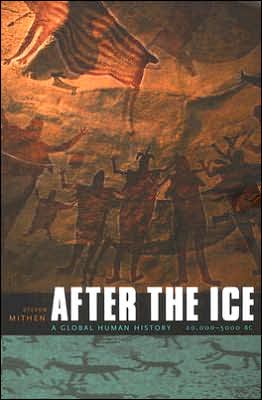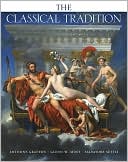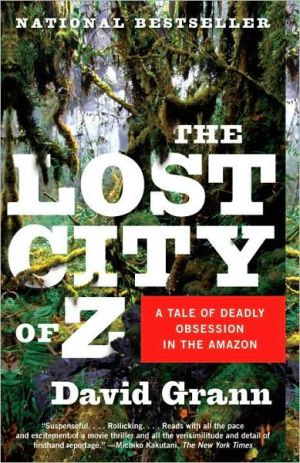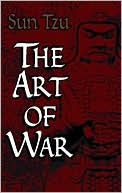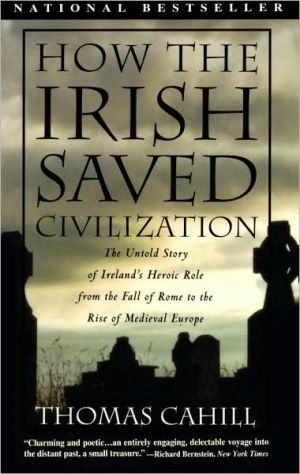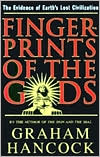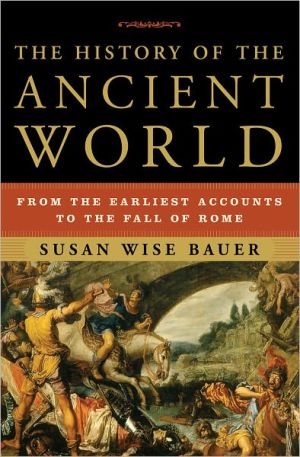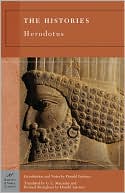After the Ice: A Global Human History 20,000-5000 BC
20,000 B.C., the peak of the last ice age—the atmosphere is heavy with dust, deserts, and glaciers span vast regions, and people, if they survive at all, exist in small, mobile groups, facing the threat of extinction.\ But these people live on the brink of seismic change—10,000 years of climate shifts culminating in abrupt global warming that will usher in a fundamentally changed human world. After the Ice is the story of this momentous period—one in which a seemingly minor alteration in...
Search in google:
20,000 B.C., the peak of the last ice age—the atmosphere is heavy with dust, deserts, and glaciers span vast regions, and people, if they survive at all, exist in small, mobile groups, facing the threat of extinction.But these people live on the brink of seismic change—10,000 years of climate shifts culminating in abrupt global warming that will usher in a fundamentally changed human world. After the Ice is the story of this momentous period—one in which a seemingly minor alteration in temperature could presage anything from the spread of lush woodland to the coming of apocalyptic floods—and one in which we find the origins of civilization itself. Drawing on the latest research in archaeology, human genetics, and environmental science, After the Ice takes the reader on a sweeping tour of 15,000 years of human history. Steven Mithen brings this world to life through the eyes of an imaginary modern traveler—John Lubbock, namesake of the great Victorian polymath and author of Prehistoric Times. With Lubbock, readers visit and observe communities and landscapes, experiencing prehistoric life—from aboriginal hunting parties in Tasmania, to the corralling of wild sheep in the central Sahara, to the efforts of the Guila Naquitz people in Oaxaca to combat drought with agricultural innovations.Part history, part science, part time travel, After the Ice offers an evocative and uniquely compelling portrayal of diverse cultures, lives, and landscapes that laid the foundations of the modern world. Nina Jablonski - Discover By the end of this rich and multilayered book, I was dazzled and hungry for more. Mithen has succeeded where other archaeologists have failed: He transports the reader back into the past, showing evocatively how humans adapted to 15,000 years worth of environmental change.
1The birth of history32The world at 20,000 BC83Fires and flowers204Village life in the oak woodland295On the banks of the Euphrates406One thousand years of drought467The founding of Jericho568Pictograms and pillars629In the valley of ravens7210The town of ghosts8011Heaven and hell at Catalhoyuk8812Three days on Cyprus9713Pioneers in northern lands11014With reindeer hunters12215At Star Carr13416Last of the cave painters14317Coastal catastrophe15018Two villages in Southeast Europe15819Islands of the dead16820At the frontier17821A Mesolithic legacy18722A Scottish envoi19623Searching for the first Americans21024American past in the present22125On the banks of Chinchihaupi22926Explorers in a restless landscape23627Clovis hunters on trial24628Virginity reconsidered25829Herders and the 'Christ-child'26630A double-take in the Oaxaca Valley27431To Koster28632Salmon fishing and the gift of history29633A lost world revealed30434Body scupture at Kow Swamp31235Across the arid zone31936Fighting men and a serpent's birth32737Pigs and gardens in the highlands33738Lonesome in Sundaland34839Down the Yangtze35940With the Jomon37041Summer in the Arctic38142A passage through India39643A long walk across the Hindu Kush40744Vultures of the Zagros42045Approaching civilisation in Mesopotamia43046Baked fish by the Nile44347On Lukenya Hill45348Frogs' legs and ostrich eggs46249A South African tour46950Thunderbolts in the tropics48351Sheep and cattle in the Sahara49052Farmers in the Nile Valley and beyond499Epilogue : 'the blessings of civilisation'504
\ American ScientistAfter the Ice offers a fascinating whirlwind tour of an underappreciated segment of human history...The prose is lively and evocative as Mithen unfolds a compelling story...The cumulative effect of this book should be a profound new appreciation of a largely unknown and crucially important period of our past. If you want to find out what you don't know about the grand sweep of human history, there is not a better place to start.\ — Douglas K. Charles\ \ \ \ \ \ BooklistUsing an unorthodox narrative device, Mithen explores why, how, and where farming displaced hunting and gathering. Mithen conjures John Lubbock, an English author of a once-popular 1865 history of the Stone Age, and sends him back in time to visit dozens of excavation sites around the world as they appeared when inhabited. Lubbock's transcontinental perambulations permit Mithen (a practicing archaeologist who describes his digs in Scotland) to underscore one causal factor in the agricultural revolution: the fluctuations of climate at the end of the last Ice Age. Weather, sea level, and zones of plant and animal life changed dramatically in the 15,000 years of Lubbock's walkabout, and Mithen explains how environmental volatility is scientifically known as he sketches Lubbock observing the various 'living' human communities that have been uncovered. A successful marriage of fact and imagination.\ — Gilbert Taylor\ \ \ \ DiscoverBy the end of this rich and multilayered book, I was dazzled and hungry for more. Mithen has succeeded where other archaeologists have failed: He transports the reader back into the past, showing evocatively how humans adapted to 15,000 years worth of environmental change.\ — Nina Jablonski\ \ \ \ \ \ Glasgow HeraldThe resulting floods, spread of forests and retreat of the deserts set up the planet we know today. Mithen's exhaustive explanation of how human beings began living in small, mobile groups and then permanent villages and the resultant creation of civilisation is a big tale that's worth staying with.\ — Brian Hennigan\ \ \ \ \ \ PaleoanthropologyThe author successfully achieved his goal of presenting a great deal of information about a pivotal point in our history in a thorough and easily digestible manner...This successful compilation of human history from 20,000-5,000 BC should not be overlooked as a key reference and welcome addition to any library of an interested novice, undergraduate student of prehistory, or seasoned archaeologist looking for a well written synthesis.\ — John D. Rissetto\ \ \ \ \ \ ScienceMithen did a huge amount of research to produce this curiously encyclopedic work. The book is empirically authoritative but quirkily postmodern...[A] truly provocative and ambitious work...After the Ice is a book that should be read and then exasperatingly argued about...And it does evoke the real excitement of doing Stone Age archaeology (from the digging to the debating the meaning of the finds): the passion to learn that has driven so many prehistorians and dreamers.\ — Lawrence Guy Straus\ \ \ \ \ \ Science NewsIn an ambitious undertaking, archaeologist Mithen describes 15,000 years of ancient history from 20,000 to 5,000 B.C....Mithen explores how studying the abrupt transition between the ice age and a period of global warming could provide clues to the effects of climate changes going on today.\ \ \ \ \ \ The HistorianThis massive and clever book opens modern scholarship about the distant past to nonspecialists. Buyers of this book will get their money's worth. It comes with a generous supply of maps and pictures of artifacts and digs, some of which are in color...Erudite and also quirky, Mithen summarizes the work of contemporary archaeologists, often by recounting his own visits to archaeological sites and drawing on insights from recent research on paleoclimates and human genetics...This impressive book stands out as the new standard work.\ — David M. Fahey\ \ \
